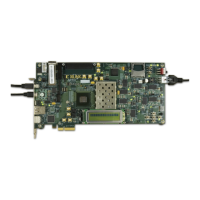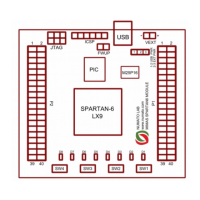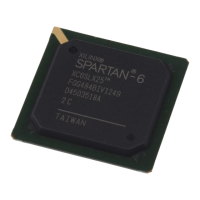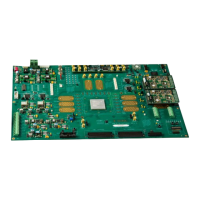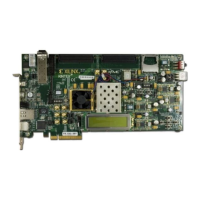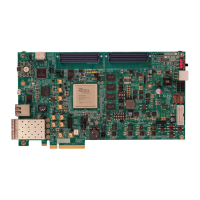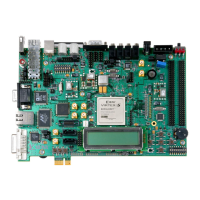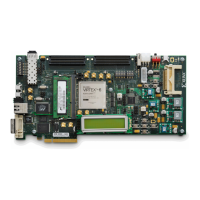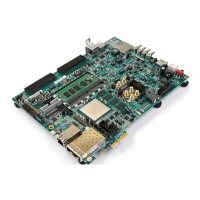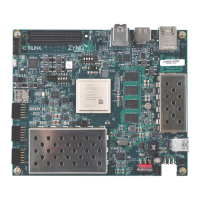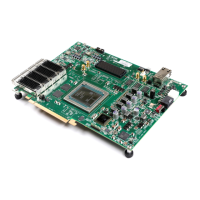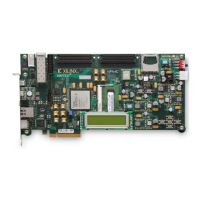
Do you have a question about the Xilinx Kintex-7 FPGA KC705 and is the answer not in the manual?
| FPGA Speed Grade | -2 |
|---|---|
| FPGA Package | FFG900 |
| Logic Cells | 326, 080 |
| DSP Slices | 840 |
| Clock Management Tiles | 10 |
| Transceivers | 16 |
| DDR3 Memory | 1GB |
| Flash Memory | 128MB |
| Clock | 200 MHz oscillator |
| Form Factor | ATX |
| Ethernet | 10/100/1000 |
| Expansion Connectors | FMC |
| USB | USB-UART |
Guides hands-on operation of BIST features and evaluation of Analog Mixed Signal (AMS).
Guides hands-on operation with the base TRD, featuring PCIe, DDR3, and AXI.
Details the prerequisites and settings for testing the hardware, including board setup.
Steps to install software, download design files, and prepare for AMS evaluation.
Covers connecting hardware, downloading the design to the FPGA, and running the AMS evaluator.
Describes the primary components of the Kintex-7 FPGA Base TRD, including PCIe, DMA, and DDR3.
Lists the prerequisites needed to test the Targeted Reference Design (TRD) in hardware.
Explains the hardware setup and use of the application GUI for quick TRD bring-up.
Details how to set up the KC705 Evaluation board with specific jumper and switch configurations.
Presents steps for hardware bring-up, including inserting the board into a PCIe slot and powering it on.
Provides instructions for installing the Fedora 16 Linux driver and booting the system.
Guides the user on configuring data transfer parameters and observing performance statistics via the GUI.
Provides links to Xilinx support websites for Answers, Documentation, Downloads, and Forums.
Information on Xilinx Solution Centers for support on devices, software tools, and intellectual property.
Lists websites for the most up-to-date information on the KC705 board and its documentation.
Lists websites providing supplemental material, including software and documentation links.
